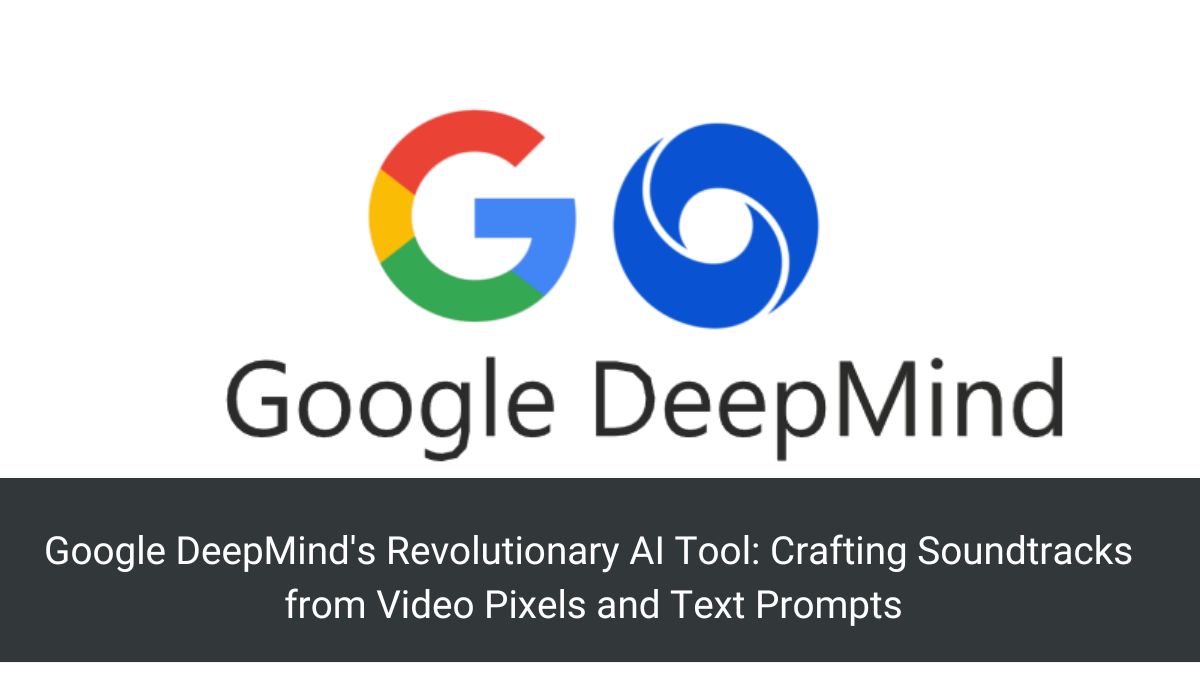AI
Google DeepMind’s Revolutionary AI Tool: Crafting Soundtracks from Video Pixels and Text Prompts

In the ever-evolving landscape of artificial intelligence, Google DeepMind has once again pushed the boundaries of what’s possible. Their latest innovation? An AI tool that generates video soundtracks by analyzing visual content and interpreting text prompts. This groundbreaking technology promises to revolutionize the way we approach audio production for video content.
The Magic Behind the Scenes
At its core, this new AI tool combines two powerful elements: visual analysis and natural language processing. By scrutinizing the pixels of a video and interpreting user-provided text prompts, the system can create audio that’s not just fitting, but deeply integrated with the visual narrative.
Imagine watching a car chase through a neon-lit cityscape. Now, picture being able to generate a soundtrack that perfectly captures the essence of that scene with a simple text prompt like “cars skidding, engine roaring, cyberpunk synth music.” That’s exactly what Google DeepMind’s tool can do.
A Symphony of Possibilities
The versatility of this AI-powered audio generator is truly impressive. Users can craft everything from dramatic scores to hyper-realistic sound effects. Even dialogue that matches the characters and tone of a video is within reach. The possibilities seem endless, limited only by one’s imagination.
One particularly intriguing aspect of this tool is its ability to generate an “unlimited” number of soundtracks for a single video. This feature opens up a world of creative exploration, allowing content creators to experiment with different audio moods and styles without constraints.
The Science Behind the Sound
To achieve such remarkable results, Google DeepMind employed a sophisticated training process. The AI was fed a diet rich in video, audio, and detailed annotations. These annotations included meticulous descriptions of sounds and transcripts of spoken dialogue. This comprehensive approach enables the system to make intelligent connections between visual events and corresponding audio cues.
The result? A tool that can synchronize audio events with visual scenes in a way that feels natural and immersive. It’s like having a skilled foley artist, composer, and sound designer all rolled into one AI package.
Pushing Boundaries, Acknowledging Limitations
While the capabilities of this new tool are undoubtedly impressive, it’s important to note that it’s still a work in progress. Google DeepMind is transparent about the current limitations and areas for improvement.
One such area is the synchronization of lip movements with generated dialogue. In demonstrations featuring claymation characters, this aspect still needs refining. It’s a reminder that even the most advanced AI systems continue to evolve and improve over time.
Another factor to consider is the tool’s dependency on video quality. Lower resolution or distorted footage can impact the quality of the generated audio. This limitation underscores the importance of starting with high-quality visual content to achieve the best results.
The Ethical Dimension: Watermarking and Responsible AI
In an era where discussions about AI ethics and transparency are at the forefront, Google DeepMind is taking proactive steps. When this tool becomes publicly available, all audio outputs will include Google’s SynthID watermark. This invisible marker will clearly identify content as AI-generated, promoting transparency and accountability in digital media creation.
A New Era for Content Creators
The implications of this technology for content creators are profound. From indie filmmakers to large production houses, the ability to quickly generate high-quality, customized audio could streamline workflows and unleash new creative possibilities.
Consider a documentary filmmaker working on a nature series. With this tool, they could potentially generate ambient soundscapes for different ecosystems, create tension-building music for dramatic moments, or even produce narration in multiple languages – all with minimal manual intervention.
The Broader AI Landscape
Google DeepMind’s audio generator doesn’t exist in isolation. It’s part of a broader ecosystem of AI tools reshaping the creative industry. When combined with other AI-powered video generation tools like DeepMind’s Veo or OpenAI’s Sora, we’re looking at a future where entire audio-visual productions could be AI-assisted from concept to completion.
This convergence of technologies raises exciting possibilities and important questions. How will these tools change the nature of creative work? What new forms of storytelling might emerge? And how do we ensure that human creativity remains at the heart of content creation?
Looking to the Future
As we stand on the brink of this new era in audio-visual production, it’s clear that tools like Google DeepMind’s video-to-audio generator will play a significant role. However, it’s important to remember that these are tools to enhance human creativity, not replace it.
The real magic will happen when human intuition and artistic vision combine with AI’s raw computational power. We’re likely to see new forms of expression emerge, blending the best of human creativity with AI’s ability to process and generate content at scale.
A Call to Create
Google DeepMind’s new AI tool for generating video soundtracks is more than just a technological marvel – it’s an invitation to reimagine the creative process. As this technology becomes more widely available, content creators of all stripes will have the opportunity to experiment, push boundaries, and tell stories in ways that were previously unimaginable.
The future of audio-visual content creation is here, and it’s more accessible than ever. Whether you’re a seasoned professional or an aspiring creator, the time to start exploring these new tools is now. Who knows? The next groundbreaking piece of content could be just a text prompt away.
As we embrace this new era of AI-assisted creativity, let’s remember to approach it with both excitement and responsibility. The tools are powerful, but it’s the human touch that will ultimately make the difference between content that’s merely generated and art that truly resonates.
